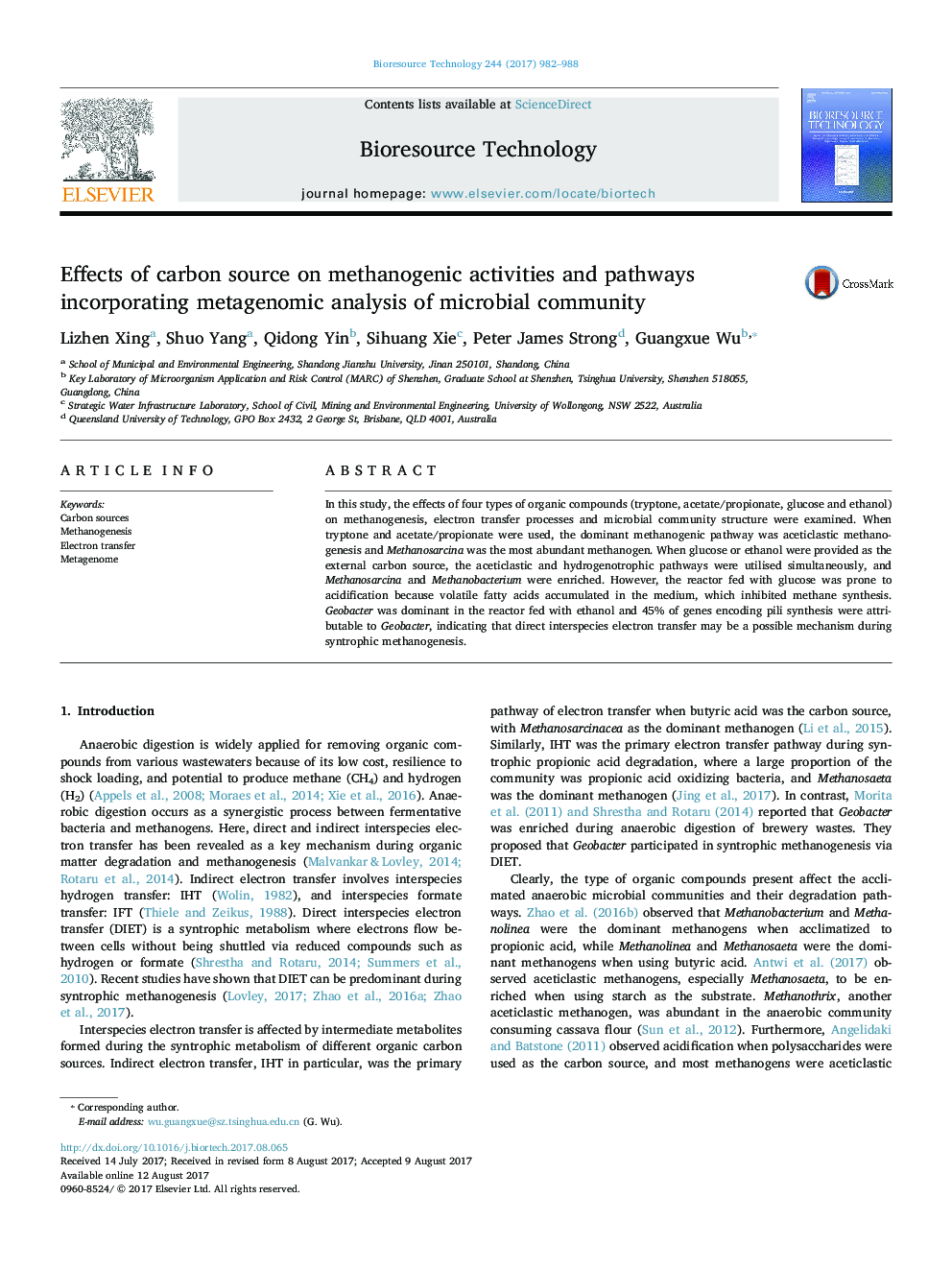| Article ID | Journal | Published Year | Pages | File Type |
|---|---|---|---|---|
| 4996560 | Bioresource Technology | 2017 | 7 Pages |
Abstract
In this study, the effects of four types of organic compounds (tryptone, acetate/propionate, glucose and ethanol) on methanogenesis, electron transfer processes and microbial community structure were examined. When tryptone and acetate/propionate were used, the dominant methanogenic pathway was aceticlastic methanogenesis and Methanosarcina was the most abundant methanogen. When glucose or ethanol were provided as the external carbon source, the aceticlastic and hydrogenotrophic pathways were utilised simultaneously, and Methanosarcina and Methanobacterium were enriched. However, the reactor fed with glucose was prone to acidification because volatile fatty acids accumulated in the medium, which inhibited methane synthesis. Geobacter was dominant in the reactor fed with ethanol and 45% of genes encoding pili synthesis were attributable to Geobacter, indicating that direct interspecies electron transfer may be a possible mechanism during syntrophic methanogenesis.
Related Topics
Physical Sciences and Engineering
Chemical Engineering
Process Chemistry and Technology
Authors
Lizhen Xing, Shuo Yang, Qidong Yin, Sihuang Xie, Peter James Strong, Guangxue Wu,
